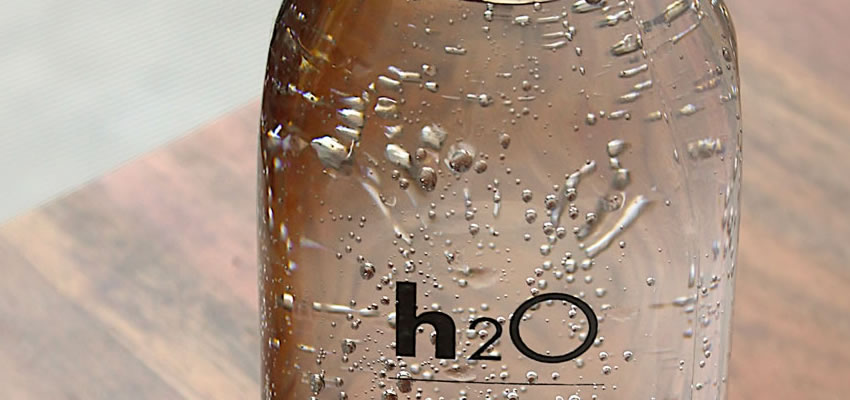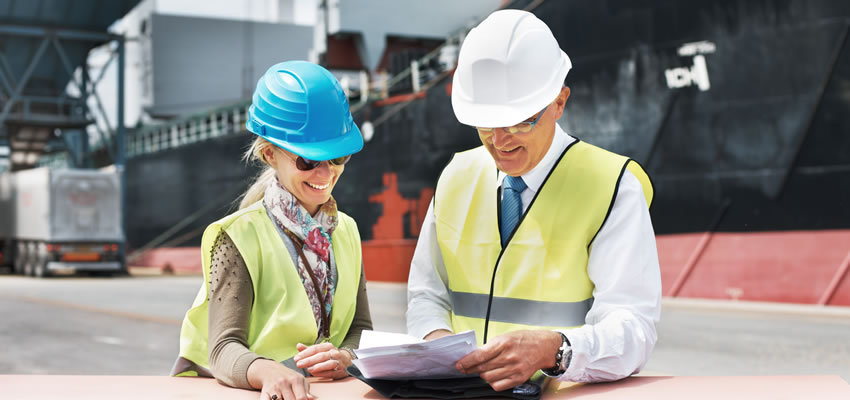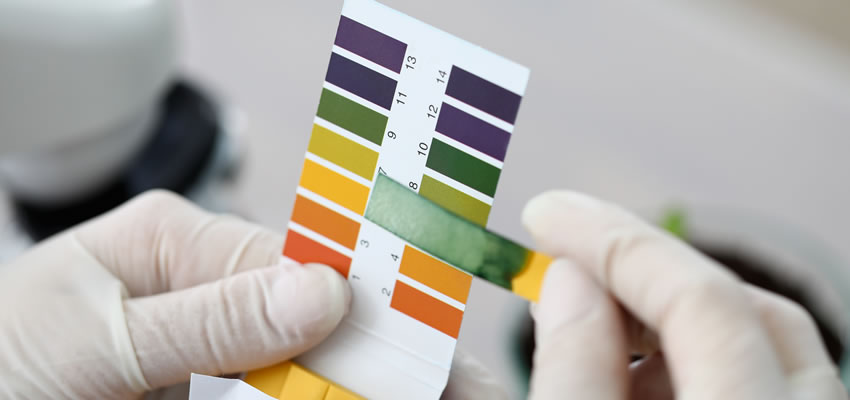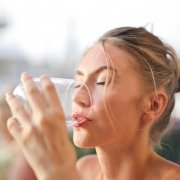Potable Water Testing on Ships & Marine Vessels
A regular programme of potable water testing on-board ships, other marine vessels and off-shore installations is an essential management process required to maintain safe drinking water supplies for crew members, passengers and others.
In this expert guide the water safety experts at Water Treatment Services consider the health risks that need to be considered by ship owners and officers and how these can be properly managed. We review the main maritime regulations and international guidance on fresh water quality, and conclude with a summary of recommendations for the testing of drinking water quality in marine environments.
Maintaining potable water quality on ships
Water, water everywhere but not a drop to drink. Providing good quality drinking water on board ships, other marine vessels and off-shore installations for both crew and passengers is an age-old problem.
Modern ships often have large, complex water storage systems and networks of distribution pipework. If they are not properly cleaned and maintained, these water systems can provide the ideal environment for bacteria and other microorganisms to flourish.
Latest recommendations call for the master of the ship to ensure that all potable water is tested for safety at least once a week. There should also be clear processes in place for potable water testing in port before fresh supplies are loaded on board.
It’s important to remember that potable water for drinking on board a ship should only come from sources which have been approved by the appropriate health authority.
Typically ships will have a designated crew member who is responsible for ensuring that any water taken on-board is safe to drink and that it is loaded, and stored properly.

What are the health risks associated with potable water on ships?
There are several common issues that link health and drinking water on board ships and marine vessels. These include:
What are the risks from legionella bacteria on ships?
In the same way that large land-based hospitals, hotels, offices, leisure centres and other buildings have the potential to harbour legionella bacteria in their water systems, ships and other off-shore installations are no different.
Legionella is a particularly dangerous bacteria that can grow in poorly managed water systems and, given the right circumstances can lead to the potentially fatal pneumonia like condition called Legionnaires’ disease.
The main areas of risk for legionella bacteria on board ships are typically showers, baths, spa pools and hot tubs, decorative fountains and potable water systems – in fact anything that causes a water spray. However, unlike land-based water systems, on board a ship, the situation is often more complex.
Bunkering fresh water from a land based supply
A ships potable water supply needs to be taken on board while it is in port, then stored in tanks or other storage vessels until it is needed. This process is sometimes referred to as bunkering.
However, depending on where the ship is traveling, it cannot always be assumed that the quality of the fresh water being brought on board ship is clean and bacteria-free to start with.
The way potable water is stored on board ship is also critically important, especially when the voyage is through hotter areas of the world.
Enforcement of regulations around drinking water quality and safety is also more complex, as it can sometimes be unclear which authorities have the legal right to enforce minimum standards.

World Health Organisation and drinking water quality
The World Health Organization (WHO) provides comprehensive guidelines covering drinking and potable water quality on ships and other marine vessels.
World Health Organisation (WHO) Guide to Ship Sanitation (2011) and Guidelines for Drinking Water Quality (2008) recommended that a number of parameters should be monitored including:
- E .coli or coliforms.
- Chlorine residual tested daily.
- pH tested daily.
- Corrosion-related contaminants including iron and copper.
The WHO guidelines covers the quality of drinking water drawn from shore sources, the way water supplies are connected to the ship and every section of the drinking water system on board ship to prevent contamination wherever possible.
The WHO guidelines require monitoring of two sets of parameters for potable water storage. These are:
Procedures to ensure good potable water quality standards on board ships
The exact methods of ensuring safe water supplies on board ships will depend on the type of vessel, number of passengers, source water quality and so on. However, there are a few basic rules which should apply to all types of ships.
- Consider how to protect drinking water supplies against the possibility of sabotage or intentional contamination.
- Clearly label taps, pipes and other water outlets to indicate whether the water is safe for drinking or not.
- Carry out regular inspections of the drinking water supplies, and accurately record all monitoring results. This should be done at least every six months. Have records available for port officials to inspect if they ask to see them.
- Pick the locations which are considered most hazardous for the sampling and water testing. These could include toilets, showers, spas and hot tubs, fountains, potable water storage tanks or water supply lines, galley, cabins and pipes used to draw fresh water on board ship while in port.
What are the rules and regulations covering drinking water quality on ships?
The Maritime Labour Convention (MLC) 2006 started to enforce regulations around potable water quality on ships in 2013.
The MLC aim is to make sure that crew members are protected from illnesses caused by poor quality potable water.
It is the responsibility of companies which own ships, ship builders and employment agencies which supply crew members to understand the rules and to make sure that their practices are fully compliant.
the competent authority shall require that frequent documented inspections be carried out on board ships, by or under the authority of the master, with respect to … supplies of drinking water
Maritime Labour Convention (MLC) 2006, Standard A3.2 – Food and Catering, paragraph 7
What about the Food and Catering regulations?
Additionally, of particular interest to officers and ship owners is Annex 2 of the Food and Catering regulations.
These regulations deal specifically with methods for loading and supplying fresh water, along with matters concerning disinfection, storage and maintenance of potable water supplies on board ships.
The guidelines give clear advice on the minimum standards required, as well as ways of reducing the risk of contamination.
What is a Fresh Water Safety Plan?
Ensuring good potable water quality is maintained on board ships is important for the health and well being of crew, passengers and others. Ship owners and vessel operators should therefore look to develop a Fresh Water Safety Plan (FWSP).
This document involves a comprehensive assessment of all drinking water supplies which covers each aspect of the supply from delivery to tap.
Having a detailed water safety plan is of particular importance for ships with large or complicated water storage and distribution systems such as cruise ships.
Additionally, maintenance of the water supply systems should be incorporated into the ship’s routine maintenance schedule to ensure all water storage tanks, distribution pipework and other components are kept in good, clean condition and so safe to use.

Potable water testing for ships
There are several standard water tests which should be carried out on all potable water within the ship environment.
The risk assessment element of the Fresh Water Safety Plan should help work out which parts of the drinking water systems pose the greatest risk to health, and where and how often potable water testing should be carried out.
The latest recommendations suggest that the master of the ship should make sure that potable water is tested for safety at least once a week. There should also be clear processes in place for potable water testing in port before fresh supplies are loaded on board.
Water testing schedules should also be flexible and easily adjusted. A new ship will typically require more frequent testing, and then as the water systems come under control the regime can be relaxed if sample results are within specification.
On the other hand, the frequency of water sampling might be increased if a problem is detected with the water supply.
Most ships and marine vessels use test strips for monitoring their drinking water quality. It is often not practical to commission specialist laboratory water testing when a ship is at sea for extended periods.
However, it is the job of the ship’s master to make sure that the member of crew responsible for water safety has the right training and water testing equipment to be able to do the job properly and safely.

World Health Organisation recommendations for testing the quality of drinking water
The World Health Organisation recommends several tests for drinking water quality. These include:
Specialist water safety risk management and water testing solutions
Water Treatment Services offer a comprehensive range of water safety risk management, potable water testing and laboratory analysis solutions to support ship owners and operators of marine vessels.
Our experts can provide advice and support to help you identify the most appropriate strategies for the safe management of your drinking water supplies.
With offices in London serving the South and South East England, Manchester (North West), Birmingham (Midlands), Bristol (South East England and Wales), Leeds (North and North East) and Glasgow (Scotland), supported by regional teams of specially trained technicians, in-field specialists and consultants we can offer professional, cost effective drinking water testing and laboratory analysis solutions across the whole of the UK and internationally.
Contact us today to learn how our expert water quality analysis services can help you keep your water safe.
Further reading…
More information about our potable water testing and laboratory analysis services … here →
REVIEWS
Submit your review here











